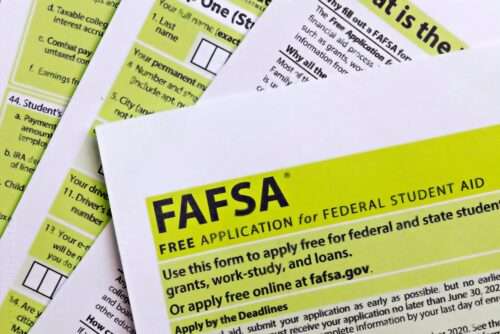As a college student, managing your finances can be a challenge. But what happens when your financial aid award exceeds the amount you owe for tuition and other expenses? You receive a financial aid refund. However, it’s important to understand how to use this money wisely.
In this article, we’ll explore the ins and outs of financial aid refunds, including what they are, how they are disbursed, and what you should do with them.
What is a Financial Aid Refund?
When it comes to financial aid, most schools don’t hand out awards as cash. Instead, they apply the funds directly to your tuition and other required costs at the start of the semester.
However, if there’s any money left over after covering these expenses, the school will issue you a financial aid refund. This surplus balance can come from loans, grants, or scholarships.
How Will I Receive My Refund?
The method of financial aid refund disbursement varies from one school to another, but there are generally three primary options:
- Check: Some schools will write a check for the amount of the leftover balance and mail it to your preferred mailing address.
- Direct Deposit: You may have the option to have your financial aid refund sent directly to your bank account through a secure direct deposit. To take advantage of this option, you will need to provide your school’s financial aid office with your bank account and routing information.
- Student Accounts: Another option many schools offer is to credit the leftover balance towards your school debit account, which can be used for future educational expenses.
How Do I Know If I Am Eligible for a Refund?
To determine if you are eligible for a financial aid refund, it’s essential to keep up to date with your account balances at school. Most schools provide an online portal where you can easily monitor what you owe.
If your balance indicates that you are owed a refund, be sure to reach out to your school’s financial aid office to coordinate the disbursement.
When Will I Receive My Refund?
Unfortunately, there is no one-size-fits-all answer to this question. The disbursement schedule for financial aid refunds is determined by each school’s financial aid office and usually takes place after essential expenses have been paid for each semester. Some schools may apply the refund before the semester begins, while others may wait until after the add/drop period.
Additionally, the refund may be disbursed in one lump sum or in multiple payments. It’s important to check your school’s website for their full financial aid schedule. If you’re unsure about any details, don’t hesitate to contact one of the financial aid advisors for clarification.
What Should I Do With My Financial Aid Refund?
While it may be tempting to splurge with your newfound funds, it’s crucial to be financially responsible and make the most of your financial aid refund. Here are some tips on how to use it wisely:
- Prioritize Necessities: Consider using the refund for essential expenses such as rent, groceries, and transportation. Ensuring your basic needs are met is vital.
- Repay Student Loans: If your refund includes money from a student loan, and you find yourself with excess funds after paying for tuition, room and board, and books, consider working with your school’s financial aid office to return the surplus. By reducing the amount you need to pay back, you’ll minimize your loan burden after graduation.
- Plan for Future Educational Expenses: If you anticipate upcoming educational expenses, such as textbooks or supplies for the next semester, saving a portion of your refund can help you avoid financial stress in the future.
- Create an Emergency Fund: It’s always a smart move to set aside some funds for unexpected emergencies. By having a safety net, you can navigate any unexpected financial challenges that may arise during your college journey.
- Avoid Impulse Purchases: While it’s tempting to indulge in non-essential items or experiences, it’s wise to resist the urge to splurge. Instead, carefully consider each purchase and ensure it aligns with your long-term financial goals.
Conclusion
Receiving a financial aid refund can provide much-needed relief for college students, but it’s crucial to handle this money wisely. By understanding what a financial aid refund is, how it’s disbursed, and what you should do with it, you can make the most of this opportunity.
Remember to prioritize necessities, consider repaying student loans, plan for future educational expenses, create an emergency fund, and avoid impulse purchases. By following these guidelines, you can set yourself up for financial success and make your college experience more enjoyable and less stressful.




